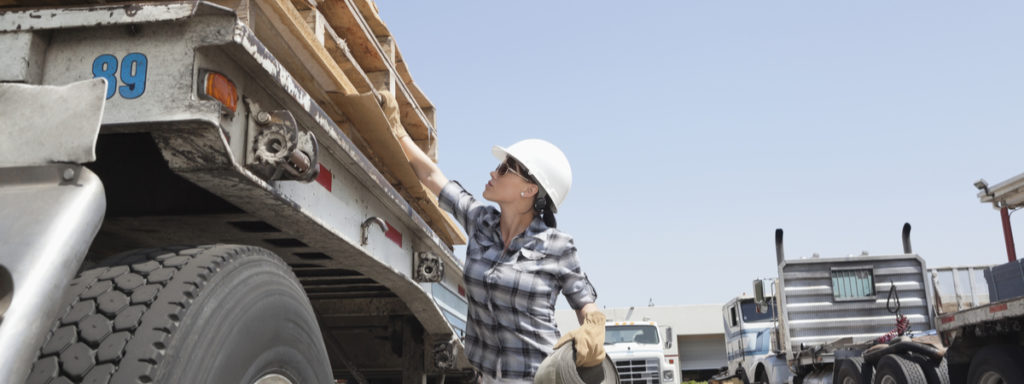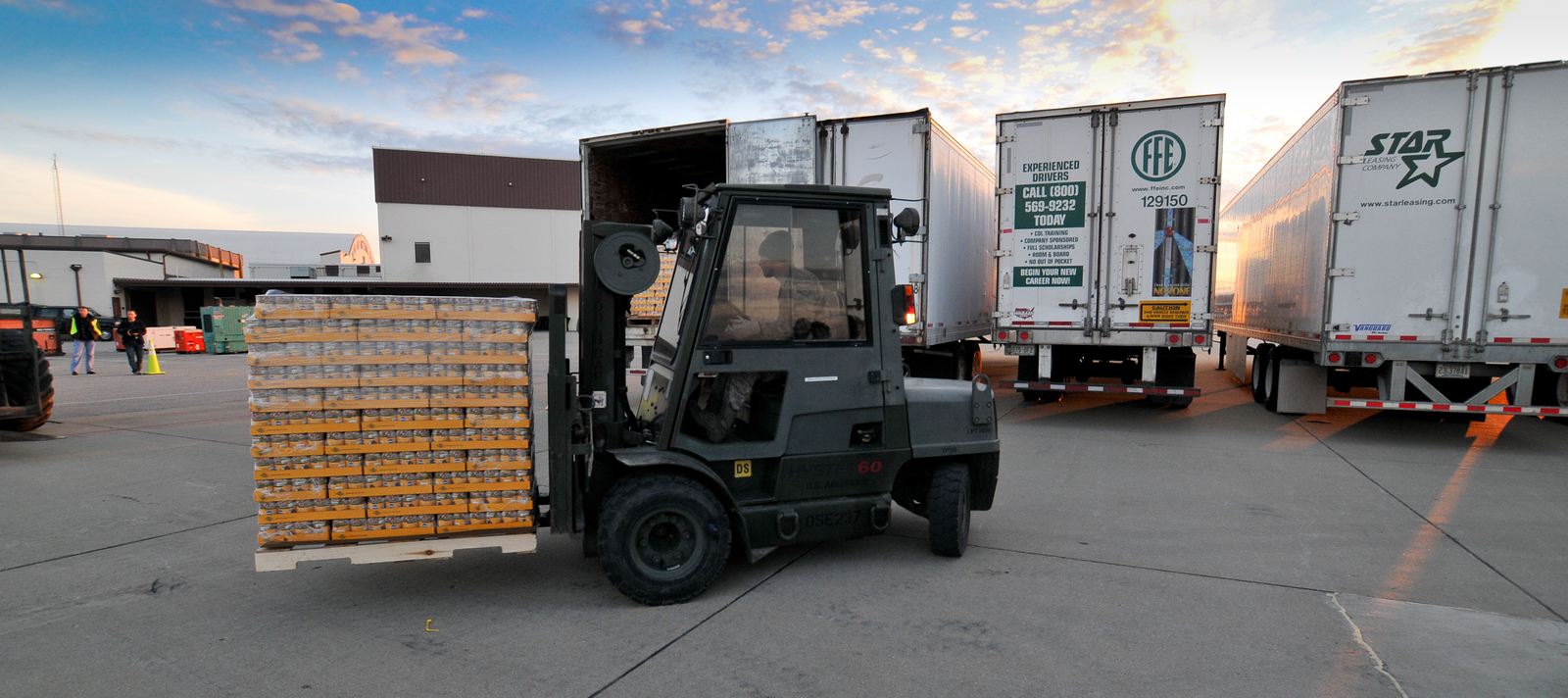It’s that time of year again—hurricane season. And for trucking companies, shippers and brokers, it’s also time to balance the run-up to peak with the other disruptions of reality. Meanwhile, the industry is dealing with the fallout from Hurricane Ida’s intense assault on Louisiana. As reported by NBC News, the state’s governor, John Bel Edwards, described the storm as “one of the strongest storms to make landfall here in modern times.” With Hurricane Katrina’s 16th anniversary coming the same day as Hurricane Ida made landfall, this is a time of great concern. Everyone is waiting to see what happens as the devastation of that event continues unfolding in the weeks to come. And freight management parties need to know a few things about what hurricane season means for logistics, how to handle the surge for affected areas, and why freight factoring or other finance options are crucial to success.
Logistics, Hurricane Season, and the Construction Industry Come Together to Add Complexity
Construction trucking, i.e., flatbed rates, always increase in tandem with hurricane season in logistics. That’s reality. However, the past hurricane seasons have led to one inevitable outcome—a greater chance for disruption and increased demand for faster, accurate, and efficient freight finance. But why is freight finance so crucial during times of upheaval like hurricane season? It comes from the need to recognize that nothing is as it seems. And the irony of this lies in how we apply data from the past to plan for the next storm and its aftermath.
Historical and real-time data insights can help shippers understand the surge in demand. The same can help carriers and trucking companies recognize when to accept tenders with O/D pairs nearest affected areas. Disaster relief loans from FEMA might be available to Louisiana-based carriers to fund operations and recovery. Still, carriers need to move more freight than what those loans might cover. As a result, it comes down to ensuring timely payment, even when shippers begin extending payment terms following such an event’s landfall.

The Things to Know About Freight Finance and Logistics During Hurricane Season
When a natural disaster strikes, carrier rates for loads with origin or destination at the affected area will inevitably increase. Such devastation creates a massive demand for trucking and undermines the efficiency of typical freight finance processes.
For instance, some parishes in the affected area have reported a complete lack of infrastructure, including no cellular service and zero options for getting food. Even worse, freight finance resources at the site may be limited and leave your company to the whims of shippers that are already struggling to get the doors open to their facilities.
It’s a grim reality for those faced with cleanup, but it will result in highly lucrative loads for the area. As such, here are the things to know about it before accepting any request despite the urgency:
- Do not take freight on a shipper’s or customer’s word. This is perhaps the most challenging issue to recognize. Carriers want to make money, and if a shipper is willing to pay, it’s a high-profitability opportunity. However, it can easily lead to lost revenue and even result in a shipper going back on the contract terms. That’s why it’s critical to get everything in writing, from the surcharges through the delivery expectations. If it isn’t in writing, it’s best to assume it isn’t reality.
- Recognize that extended dwell times will happen. Another factor that will affect your profitability is dwell time. During hurricane aftermath transport, dwell times grow exponentially. They’re even longer if warehouses or shippers have experienced extreme damage. These extended times mean you should build in additional detention charges well before accepting a load.
- Carefully consider the requirements for each load. Freight comes with special handling and equipment needs, especially when viewing construction and food shipments. What good is it to get a food supply to an area without electricity if it requires refrigeration? Take these issues into consideration and recognize that you might need to go with more reefer loads than those usually shipped without such concerns.
- Plan on waiting in traffic. Dwell time might lead to delays on side streets and traffic issues, but those problems aside, there will still be traffic delays. Debris and floodwaters may block the optimum routes, and your mileage can quickly soar if a detour adds 50 more miles and extends your costs. Plan on waiting in traffic and build those delays into your costs, using them to ensure profitable freight finance throughout the whole journey to and from affected areas.
- Do not plan to get paid earlier by a shipper. There’s a perception that urgency equals urgency of pay. That’s the farthest thing from reality. Shippers need to return to operations, not focus on administrative issues, like paying carriers. Your invoice payment terms, typically 30-day to 90-day standards, will increase by a month or more. The duration of recovery may also extend freight payment on outstanding invoices as well. Therefore, you may need to take other means of recourse to get paid. For example, if your company typically waits on shippers to pay at a 90-day interval, hurricane-induced demand may make freight factoring more appealing. Additionally, it is worth considering the differences between recourse versus non-recourse freight factoring. In other words, it’s imperative to assume that the shipper may not pay in the end, and if your company is on the hook for paying back advanced funds to the factoring service provider, your cost control goes out the window. Always ensure you know what might happen if the shipper never pays and who will carry the burden of paying in the end.
- Remember the surcharges brokers may assess. Even if your company works with brokerages to find loads, remember that the rates offered may not yet include brokerage disaster surcharges and fees. Brokers get paid their base rate plus an urgent rate for freight heading into and out of affected areas. Always look for these surcharges and determine how they affect the true profitability per load.
- Be ready for manual logs and limited connectivity. This issue is especially prudent for Louisiana areas without cellular service right now. Without an active internet connection, your ELD may not update properly. As such, trucking companies may need to rely on paper logs to handle things. That’s also true if water or other possible damage occurs to your rig and leads to a failure of the ELD.
- Take advantage of external resources where possible. Many things can and do go wrong in the aftermath of a major storm’s landfall. While it’s an opportunity to increase profitability, it’s important to remember that you are not alone and that options exist. These options include leveraging external resources, like mainstream freight data sources, such as DAT and JOC, to help your team understand what’s happening. Additionally, other freight finance solutions can still function throughout the disruptions caused by storms, provided you know where to look.
- Know when to look for other loads too. It’s easy to want to help and provide transportation to areas affected by natural disasters like hurricanes, but other moves might prove more lucrative in a highly volatile market. It all depends on where your fleet is located right now and whether you can justify the costs of getting freight delivered on time and in full. With that in mind, consider checking other load boards, like ComFreight, to review moves that might be more lucrative without running the risks associated with transport to hurricane-affected areas.
Enhance Freight Finance Efforts to Help With Recovery by Leveraging the Expertise of ComFreight and the Power of HaulPay
The Atlantic hurricane season runs through November 30 annually, and this coming winter is anticipated to see increased precipitation due to the mounting risk of La Nina.
It’s going to be more critical than ever to take weather-related disruptions into account when reviewing available loads, and part of the risk can be mitigated by following the steps above and putting a dedicated freight finance solution like HaulPay to work. Request a demo to see how your team can still get paid on time, using HaulPay, despite the disruptions caused by this and future hurricanes.
